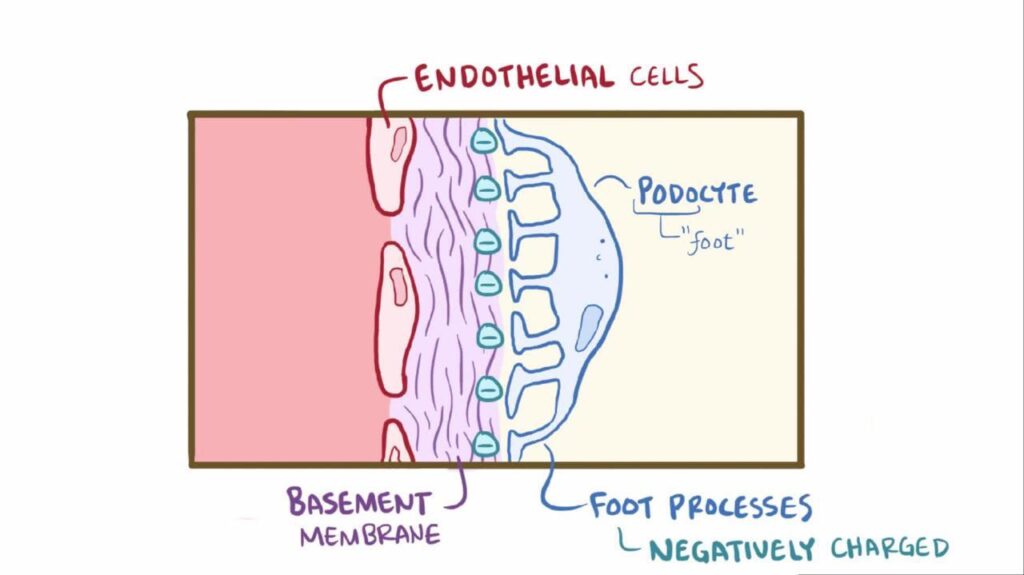Minimal Change Glomerulonephritis (MCGN), also known as Minimal Change Disease (MCD), is a kidney disorder characterized by abnormal protein leakage in urine, leading to nephrotic syndrome. It is most commonly seen in children but can also affect adults. Unlike other types of glomerulonephritis, MCD does not show significant structural damage under a standard microscope, which is why electron microscopy is required for diagnosis.

Causes and Risk Factors
Although the exact cause of MCD is unknown, several factors contribute to its development:
- Immune System Dysfunction: Abnormal immune responses may damage the glomerular filtration barrier.
- Infections: Viral infections like Epstein-Barr virus and upper respiratory infections can trigger MCD.
- Medications and Toxins: Nonsteroidal anti-inflammatory drugs (NSAIDs) and certain antibiotics have been linked to MCD.
- Allergic Reactions: Some cases are associated with food allergies or insect bites.
- Hodgkin’s Lymphoma: MCD has been observed in individuals with Hodgkin’s disease.
Symptoms of Minimal Change Glomerulonephritis
The primary symptoms of MCD align with nephrotic syndrome:
- Severe Proteinuria: Excessive protein leakage in urine, leading to foamy urine.
- Edema: Swelling in the legs, ankles, and around the eyes due to fluid retention.
- Hypoalbuminemia: Low blood albumin levels resulting from protein loss.
- Hyperlipidemia: Elevated blood lipid levels.
- Fatigue and Weakness: Resulting from decreased kidney function.
Diagnosis
Diagnosing MCD involves a combination of clinical evaluation and laboratory tests:
- Urinalysis: Detects proteinuria, the hallmark of MCD.
- Blood Tests: Evaluates albumin levels, kidney function, and lipid profile.
- Renal Biopsy: The definitive diagnostic tool, often revealing normal glomeruli under light microscopy but abnormalities under electron microscopy.
- Immunological Tests: Rule out other forms of glomerulonephritis with immune-mediated causes.
Treatment Options
The primary goal of treatment is to reduce proteinuria and manage symptoms:
1. Corticosteroids
- Prednisone is the first-line treatment, leading to remission in most cases.
- Long-term use requires careful monitoring for side effects like osteoporosis and weight gain.
2. Immunosuppressive Therapy
- In steroid-resistant cases, drugs like cyclophosphamide, cyclosporine, or rituximab may be prescribed.
3. Diuretics and Fluid Management
- Loop diuretics like furosemide help manage edema.
- Salt restriction is recommended to control fluid retention.
4. Protein and Lipid Management
- ACE inhibitors or ARBs help reduce proteinuria.
- Statins may be prescribed for hyperlipidemia.
Prognosis and Long-Term Outlook
- Children: Around 80% achieve complete remission with steroids.
- Adults: Higher relapse rates, but most respond well to immunosuppressive therapy.
- Complications: Uncontrolled MCD can lead to infections, thromboembolism, and progressive kidney damage.
Prevention and Lifestyle Management
While MCD cannot always be prevented, the following measures help reduce risk:
- Avoid NSAIDs and nephrotoxic drugs.
- Maintain a balanced diet with controlled sodium intake.
- Stay hydrated and manage underlying infections promptly.
- Regular health check-ups for early detection and management.
Minimal Change Glomerulonephritis is a significant cause of nephrotic syndrome, particularly in children. Early diagnosis and treatment with corticosteroids provide excellent outcomes. However, long-term monitoring is crucial to prevent relapses and complications. Patients should follow a structured treatment plan and adopt healthy lifestyle habits to ensure optimal kidney function.

